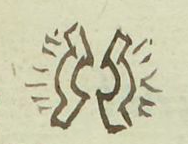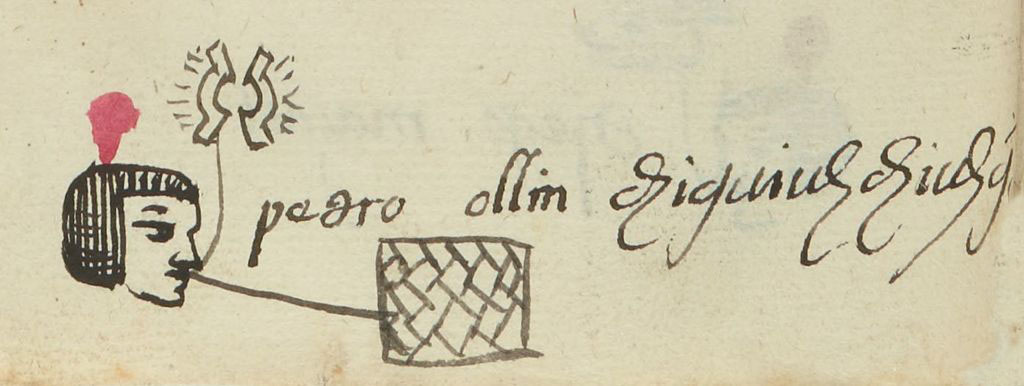Olin (MH486v)
This black-line drawing of the simplex glyph for the personal name Olin (here, attested as a man's name) shows two upright brackets with curved centers and straight tops and bottoms. The curved center practically make a circle in the middle, although the two brackets do not touch. The ends of the brackets together create something of an X shape. The formation of the X and the circle in the middle could be considered a quincunx, which has a significance in thinking about the cosmos. On the outsides of the brackets are small dashes, suggesting a glow or movement. In fact, olin means movement.
Stephanie Wood
This man had the occupation of a basket maker, and he retained his Nahua name after baptism as a Christian. He was probably given the name Olin at birth after having been born on that day. Olin was a day name in the 260-day divinatory calendar called the tonalpohualli in Nahuatl. This calendar had a role in Nahuas' religious view of the cosmos.
The shapes for olin (movement) vary considerably across the Matrícula de Huexotzinco (MH) and across manuscripts. See below for two olin glyphs from the Codex Mendoza, along with other examples from the MH. The bracket-like shape of this olin glyph is reminiscent of some ball court representations (see below). The movement (olin) of the rubber ball (olli) through the ball court (tlachtli) had a cosmic significance.
Stephanie Wood
pedro ollin chiguiuhchiuhq~
Pedro Olin, Chiquiuhchiuhqui
Stephanie Wod
1560
Stephanie Wood

movement, movimiento, days, días, fechas, dates, calendarios, calendars, nombres de hombres

olin, movement or earthquake, https://nahuatl.wired-humanities.org/content/olin.
Movimiento
Stephanie Wood
Matrícula de Huexotzinco, folio 486v, World Digital Library, https://www.loc.gov/resource/gdcwdl.wdl_15282/?sp=52&st=image.
This manuscript is hosted by the Library of Congress and the World Digital Library; used here with the Creative Commons, “Attribution-NonCommercial-ShareAlike 3.0 License” (CC-BY-NC-SAq 3.0).













